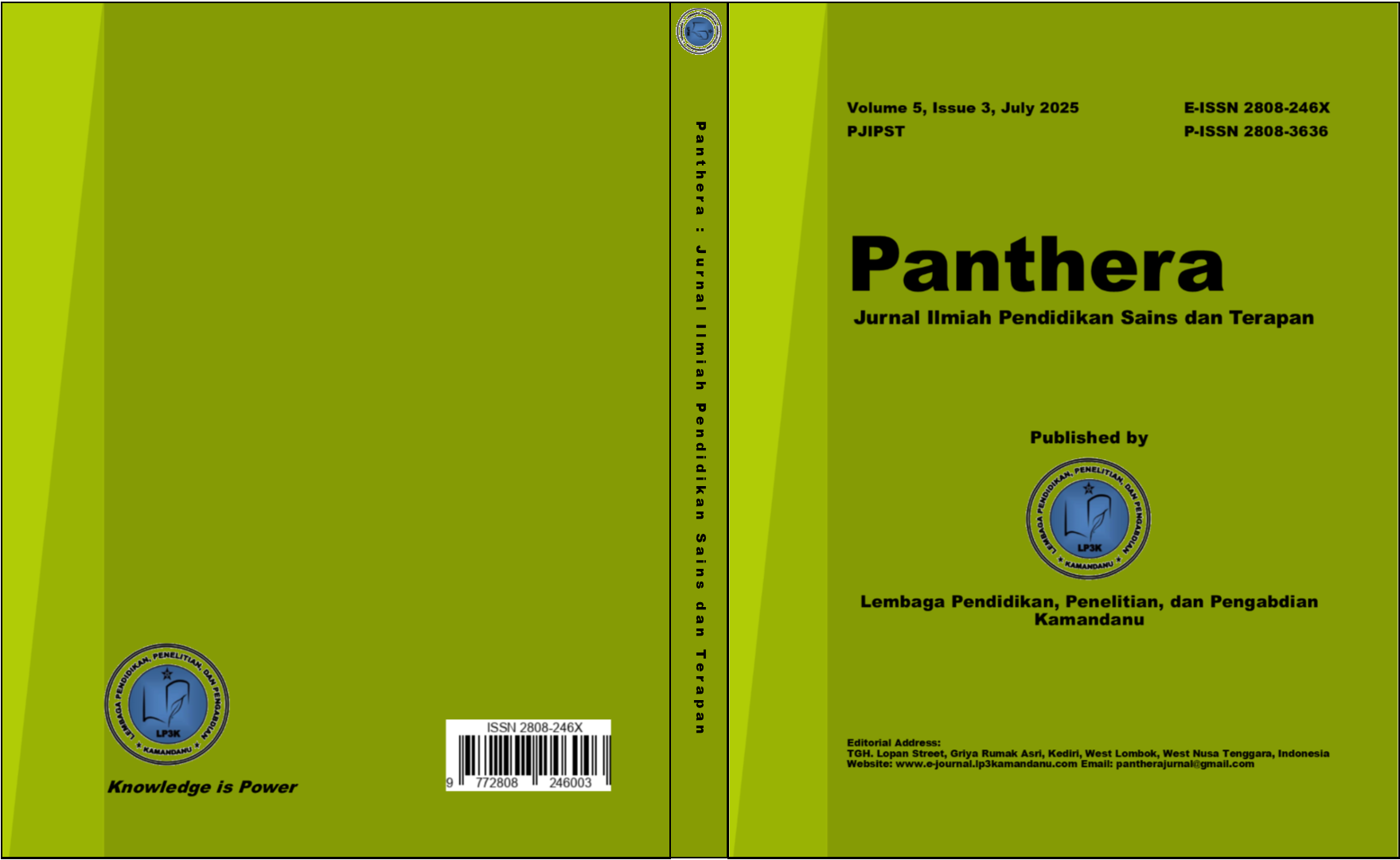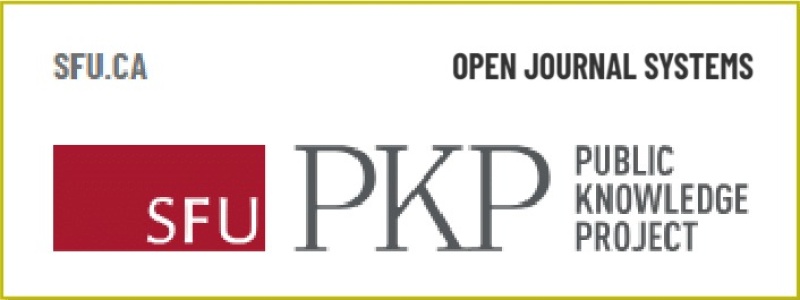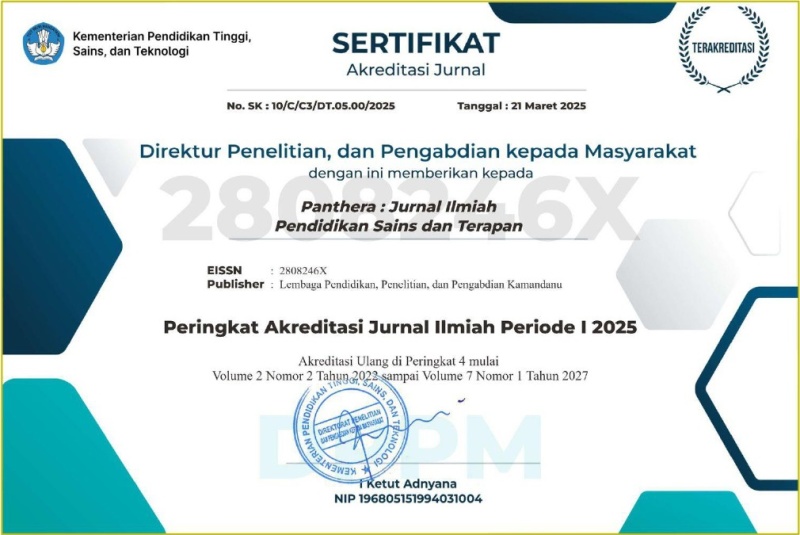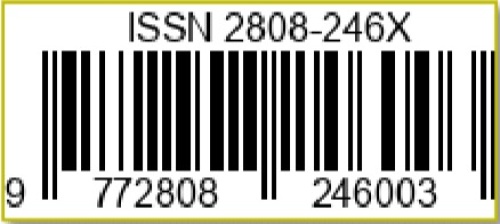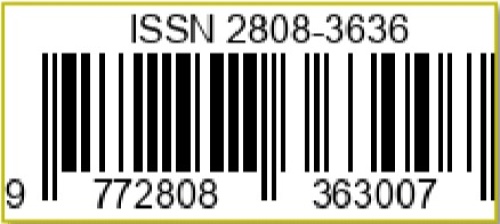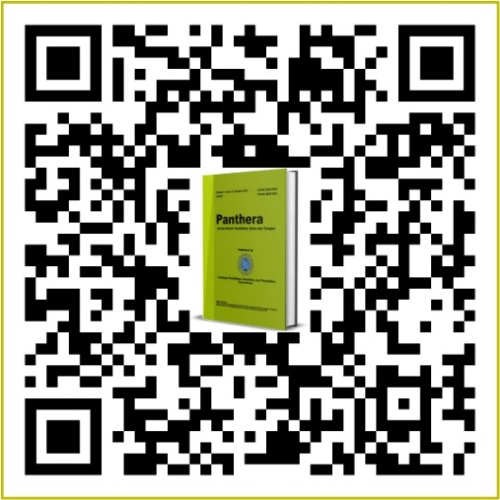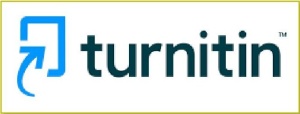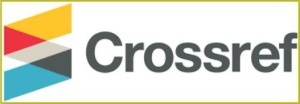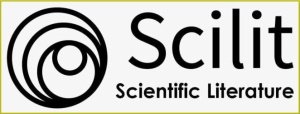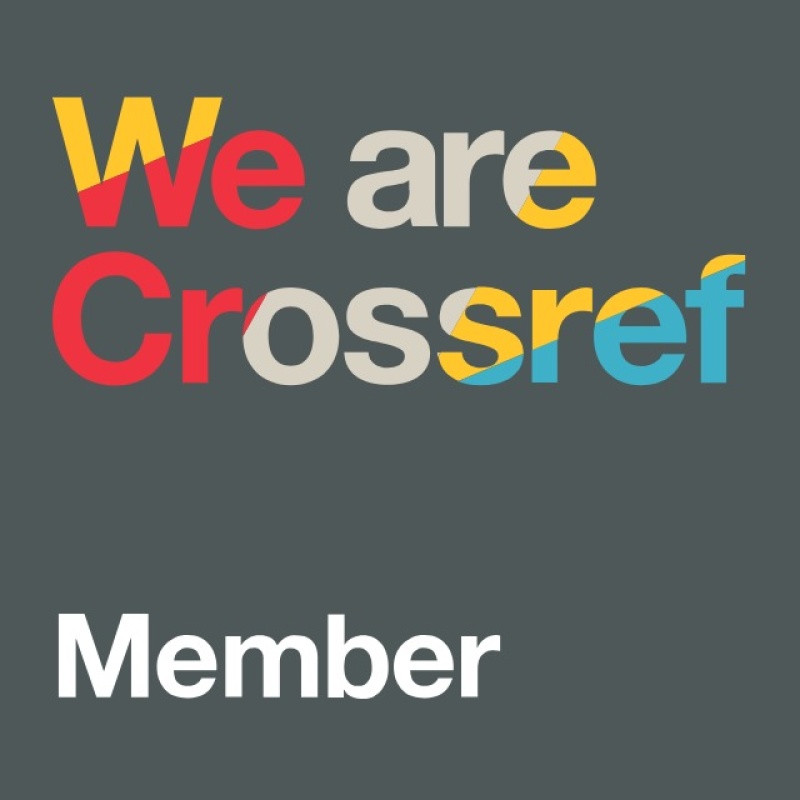Pembelajaran Berbantuan E-Modul untuk Meningkatkan Capaian Pembelajaran Kognitif Fungsi Bagian-bagian Mesin Frais
DOI:
https://doi.org/10.36312/panthera.v5i3.549Keywords:
Milling Machine Parts, Interactive E-Modules, Cognitive Learning Outcomes, Vocational Education, Machining EngineeringAbstract
The low achievement of students' cognitive learning outcomes in the material of the function of milling machine parts indicates the need for innovation in learning media that is more interactive and adaptive to the characteristics of vocational high school students. This study aims to evaluate the effectiveness of the use of interactive e-modules in improving student learning outcomes in the subject of Machining Engineering. This study uses a quantitative approach with a quasi-experimental design of the Nonequivalent Control Group Design type involving two classes of XI Machining Engineering at SMK Negeri 1 Karangawen as the experimental group and the control group. The main instrument is a 20-item multiple-choice test that has been validated using the Content Validity Ratio (CVR) and its reliability tested with the Intraclass Correlation Coefficient (ICC). Data analysis included normality test, homogeneity test, two-tailed t-test on pre-test, one-tailed t-test on post-test, and N-Gain analysis. The results showed that there was no significant difference between the two groups in the pre-test (p = 0.762), but there was a statistically significant difference in the post-test (p < 0.001), with an average value of 81.25 for the experimental group and 72.50 for the control group. The average N-Gain of the experimental group reached 0.5515, higher than that of the control group at 0.3543. These findings indicate that interactive e-modules are effective in improving students' cognitive learning outcomes on conceptual and visual materials. Thus, interactive e-modules are worthy of recommendation as alternative digital learning media in vocational education, especially to strengthen the technical understanding of vocational high school students in accordance with the demands of technological developments and the needs of the industrial world.
Downloads
References
Abdullah, G., Apriyanto, A., Patahuddin, A., Janah, R., Dia, E. E., Retnoningsih, R., Wiradika, I. N. I., & Setyaningrum, V. (2024). Buku Ajar Evaluasi Pembelajaran. Jambi: PT. Sonpedia Publishing Indonesia.
Anderson, L. W., & Krathwohl, D. R. (2001). A Taxonomy for Learning, Teaching, and Assessing: A Revision of Bloom’s Taxonomy of Educational Objectives. Boston: Allyn & Bacon.
Ariningsih, N. L. T., Fitriani, H., & Safnowandi, S. (2023). Pengaruh Model Pembelajaran Student Teams Achievement Division (STAD) terhadap Motivasi dan Hasil Belajar Kognitif Siswa. Educatoria : Jurnal Ilmiah Ilmu Pendidikan, 3(4), 248-261. https://doi.org/10.36312/educatoria.v3i4.214
Cahyani, K. D. (2024). Pengembangan E-Modul IPA Kemampuan Berpikir Kritis Peserta Didik Berbasis Scientific Approach. Skripsi. Universitas Islam Negeri Raden Intan Lampung.
Hake, R. R. (1999). Analysing Change/Gain Score. Bloomington: Indiana University.
Khumaedi, M., Widjanarko, D., Setiadi, R., & Setiyawan, A. (2021). Evaluating the Impact of Audio-Visual Media on Learning Outcomes of Drawing Orthographic Projections. International Journal of Education and Practice, 9(3), 613-624. https://doi.org/10.18488/journal.61.2021.93.613.624
Lastri, Y. (2023). Pengembangan dan Pemanfaatan Bahan Ajar E-Modul dalam Proses Pembelajaran. Jurnal Citra Pendidikan, 3(3), 1139-1146. https://doi.org/10.38048/jcp.v3i3.1914
Manggala, M. A., Nyanasuryanadi, P., & Suherman, H. (2024). Inovatif Pembelajaran Menggunakan E-Modul. Jetish : Journal of Education Technology Information Social Sciences and Health, 3(1), 550-557. https://doi.org/10.57235/jetish.v3i1.1983
Rahmadhani, S., Efronia, Y., & Tasrif, E. (2021). Penggunaan E-Modul di Sekolah Menengah Kejuruan pada Mata Pelajaran Simulasi Digital. Javit : Jurnal Vokasi Informatika, 1(1), 6-11. https://doi.org/10.24036/javit.v1i1.16
Riyadi, L., & Budiman, N. (2023). Capaian Pembelajaran Seni Musik pada Kurikulum Merdeka sebagai Wujud Merdeka Belajar. Musikolastika : Jurnal Pertunjukan dan Pendidikan Musik, 5(1), 40-50. https://doi.org/10.24036/musikolastika.v5i1.104
Suhendra, I. W., Arnyana, I. B. P., & Candiasa, I. M. (2024). Upaya Meningkatkan Hasil Belajar IPAS Menggunakan Bahan Ajar Digital untuk Siswa. Nusantara : Jurnal Pendidikan Indonesia, 4(1), 59-78. https://doi.org/10.14421/njpi.2024.v4i1-4
Suryaningrum, G. D., & Mawardi, M. (2023). Efektivitas Model Pembelajaran Discovery Learning Ditinjau dari Kemampuan Berpikir Kritis Siswa Kelas 5 SD. Scholaria : Jurnal Pendidikan dan Kebudayaan, 13(3), 222-230. https://doi.org/10.24246/j.js.2023.v13.i3.p222-230
Wilson, L. O. (2016). Anderson and Krathwohl: Bloom’s Taxonomy Revised - Understanding the New Version of Bloom’s Taxonomy. Quincy: Quincy College.
Zaki, D. Y. A. (2020). Penggunaan Media Pembelajaran untuk Meningkatkan Prestasi Belajar Siswa pada Pelajaran PKN SMA Swasta Darussa’adah Kec. Pangkalan Susu. Al-Ikhtibar : Jurnal Ilmu Pendidikan, 7(2), 809-820. https://doi.org/10.32505/ikhtibar.v7i2.618
Downloads
Published
How to Cite
Issue
Section
License
Copyright (c) 2025 Fahmi Nurdiansyah, Muhammad Khumaedi, & Kriswanto

This work is licensed under a Creative Commons Attribution-ShareAlike 4.0 International License.
-
Attribution — You must give appropriate credit, provide a link to the license, and indicate if changes were made. You may do so in any reasonable manner, but not in any way that suggests the licensor endorses you or your use.
-
ShareAlike — If you remix, transform, or build upon the material, you must distribute your contributions under the same license as the original.

